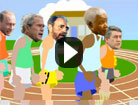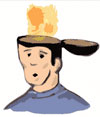Yesterday, Google told me, was the anniversary of Sir Edmund Hillary and Sherpa Tenzing conquering Everest. I only mention this because Hillary died in January this year and the obituaries all talked about his combination of bravery and humility. His first words on descending the mountain were ‘We’ve done it” (or words to that effect – ruder words to that effect, in fact). Not ‘I’, but ‘We’.
Also, he would never say which of the two men set foot first on Everest, as he saw it as a team accomplishment. It was only long after Norgay Tenzing’s death that Hillary admitted that he, Hillary, had set foot on the summit first.
He spent much of his life after Everest building schools (30 of them), hospitals and bridges in Nepal, whose people made him an honorary Nepalese citizen. I think we learn from Hillary that great leaders think and act ‘We’ instead of ‘I’, and lead themselves and others to achieve extraordinary things, while not taking themselves too seriously.
He described himsef as a person of modest talents but great determination. And he decided to use his prominence to set up The Himalaya Trust and be a servant of the people of Nepal, which is an interesting example of servant-leadership.
Of course, it might have been Tenzing who was a or the great leader of that expedition (the official leader, an Englishman named Hunt, is largely forgotten), with the cultural bias of the time and the dominance of English-language media in the world, and the sherpas’ role as paid ‘helpers’, all combining to create the assumption that Hillary led, with Tenzing seen as his back up. Sherpas are guides, after all, and guides lead. We may never know. But, that’s a different point. And probably not an important one if we strip away the racial bias in how the achievement was presented to the world, which is, of course, important to at least be aware of.
Hillary’s character seems pure servant-leader to me, or Level 5 leader as Jim Collins would define that mix of humility and bravery and ongoing longterm commitment to the people of Nepal. Here’s some of the coverage after his death if you are interested:
BBC Sir Edmund Hillary obituary from January 2008









Leave a Reply